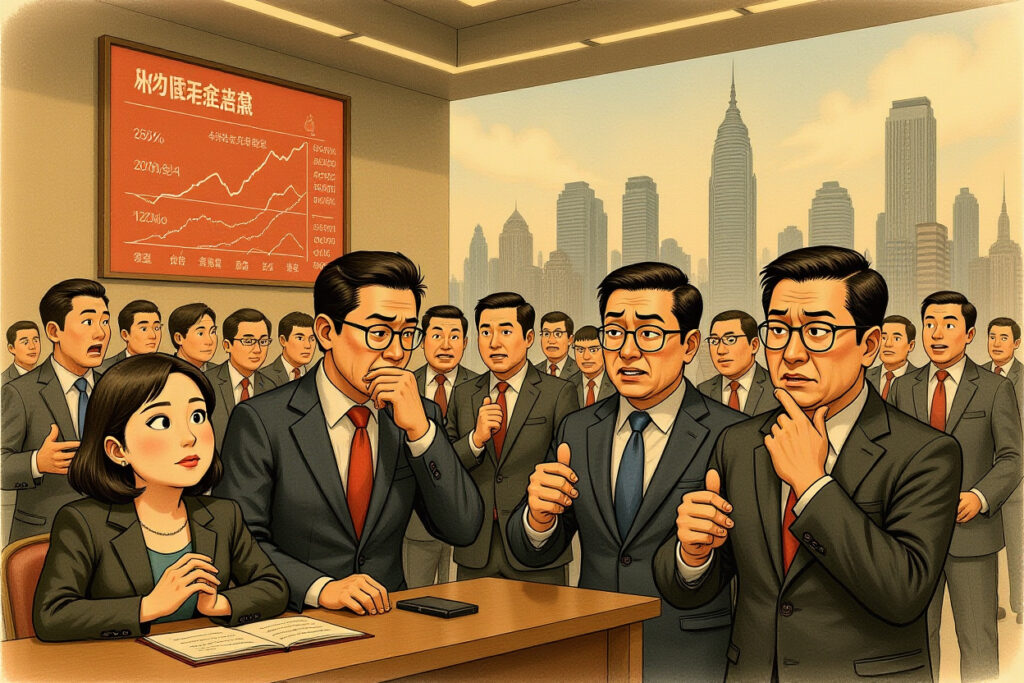Executive Summary: Critical Market Implications
– Romoss (罗马仕), a major power bank manufacturer, has multiple 3C certifications revoked by China Quality Certification Center
– Certification suspension stems from failure to address safety compliance issues within mandated timeframe
– Company facing potential bankruptcy with production halted since July and inventory destruction looming
– Broader regulatory crackdown has suspended 8,756 and revoked 609 power bank-related CCC certificates nationwide
– Market consolidation expected as regulators target “OEM/ODM” quality control vulnerabilities
Regulatory Hammer Falls on Power Bank Safety
Shenzhen Romoss Technology Co., Ltd. (深圳罗马仕科技有限公司) faces existential threats as China’s quality regulators revoke multiple compulsory certification certificates for its fast-charging power banks. The 3C certification (China Compulsory Certification) status changes, effective September 16-17, reflect intensifying regulatory scrutiny over consumer electronics safety following nationwide quality campaigns.
The certification revocations specifically cite “expiration of certification suspension period without restoration applications submitted by certificate holder, or failure to implement corrective measures, or continued non-compliance after rectification.” This regulatory action demonstrates China’s strengthened enforcement posture toward electronics manufacturers failing to meet safety standards.
Chronology of Compliance Failures
Romoss’s regulatory troubles began months earlier when multiple 3C certificates were suspended following safety incidents. According to China Quality Certification Center (中国质量认证中心) records, the company maintained several suspended certificates that never achieved compliance restoration. Industry sources indicate the company received adequate warning and remediation periods before facing ultimate certification revocation.
Market rumors about Romoss entering bankruptcy proceedings emerged in late July, with employees confirming to Lanjing News that “results should be available before National Day.” The employee noted the critical deadline implication: “Since certificate suspension cannot exceed three months, if not restored by end-September, all inventory products must be destroyed.”
Production Halts and Operational Collapse
The certification crisis triggered complete operational shutdowns at Romoss facilities. On July 6, the company issued official notices suspending production activities, followed by a July 15 statement claiming “main members of operation team remain at their posts” while maintaining recall services.
Industry analysts view these moves as damage control measures rather than sustainable operational strategies. The 3C certification revocations effectively prevent legal manufacturing or sales of affected products in China, creating insurmountable barriers to business continuity.
Inventory Destruction and Bankruptcy Scenarios
With September deadlines passing without certification restoration, Romoss faces mandatory destruction of existing inventory—a financial blow potentially triggering insolvency. Company representatives acknowledged the binary outcome: “If unable to resume production and sales eventually, [the company] will either cancel business registration or go bankrupt.”
The inventory destruction requirement reflects China’s strengthened product safety enforcement mechanisms. Regulators now prevent non-compliant products from reaching consumers through secondary channels or discount markets, eliminating potential safety hazards through compulsory disposal measures.
Broader Regulatory Crackdown on Power Banks
Romoss’s situation represents just one case within China’s comprehensive charging product safety campaign. From July through September, the State Administration for Market Regulation (市场监管总局) deployed nationwide quality improvement initiatives targeting power bank safety hazards.
Zhang Wei (张威), Director of Consumer Product Certification at SAMR’s Certification Supervision Department, revealed staggering enforcement statistics: certification bodies have suspended 8,756 CCC certificates and revoked 609 certificates from power bank and battery cell enterprises. Current valid certifications stand at 4,967 certificates covering 547 companies for power banks, and 26,687 certificates covering 1,073 enterprises for battery cells.
Focus on OEM/ODM Quality Control
Regulators specifically highlighted quality management problems with “OEM/ODM” (贴牌代工) products—manufacturing arrangements where brands contract production to third-party facilities. This focus suggests increased scrutiny of supply chain management and quality assurance processes across consumer electronics sectors.The certification statistics indicate approximately 15% of power bank certificates faced suspension or revocation, suggesting widespread compliance issues within the industry. This regulatory purification effort aims to eliminate substandard products while rewarding compliant manufacturers with market share opportunities.
Market Implications and Investment Considerations
The Romoss case and broader regulatory actions create significant implications for consumer electronics investors and industry participants. Several key trends emerge from these developments that warrant careful consideration.
Industry Consolidation and Market Share Shifts
The removal of non-compliant manufacturers creates immediate market share opportunities for certified producers. With nearly 2,000 companies holding valid certifications across power banks and battery cells, the market remains fragmented but now features improved compliance standards.
Major brands with robust quality control systems stand to gain substantial market share as regulators eliminate smaller, non-compliant competitors. Investors should monitor certification status across portfolio companies and evaluate quality management capabilities as competitive advantages.
Supply Chain Due Diligence Requirements
The focus on OEM/ODM arrangements necessitates enhanced supply chain visibility for brands and investors. Companies relying on contract manufacturing must demonstrate active quality oversight rather than passive certification reliance.
Investment due diligence should now include deeper supply chain audits and quality management assessments. Manufacturers with vertically integrated production or established supplier quality programs may command valuation premiums amid regulatory uncertainties.
Future Regulatory Direction and Compliance Strategies
China’s regulatory approach to consumer electronics safety appears increasingly systematic and enforcement-driven. The power bank campaign follows similar quality initiatives across various product categories, indicating sustained regulatory attention to product safety.
Proactive Compliance as Business Imperative
Manufacturers must transition from reactive compliance to embedded quality management. The Romoss case demonstrates that temporary certificate suspensions provide limited remediation opportunities before facing permanent revocation.
Companies should implement continuous compliance monitoring rather than periodic certification renewals. Early warning systems for quality issues and rapid response protocols become essential components of operational resilience.
Technology Solutions for Compliance Management
Emerging technologies offer promising compliance management solutions. Blockchain-based supply chain tracking, AI-powered quality inspection systems, and automated compliance monitoring platforms can help manufacturers maintain certification requirements while reducing operational costs.
Investors should evaluate portfolio companies’ technology adoption in compliance management areas. Manufacturers leveraging technology for quality assurance may demonstrate superior risk management and regulatory adaptability.
Strategic Recommendations for Market Participants
The evolving regulatory landscape requires strategic adjustments across the consumer electronics ecosystem. Various stakeholders face distinct challenges and opportunities in this new compliance environment.
For Manufacturers: Quality as Competitive Advantage
– Implement integrated quality management systems spanning design, production, and supplier management
– Develop proactive certification maintenance programs with regular self-audits and compliance verification
– Diversify product certifications across regulatory jurisdictions to mitigate market-specific risks
– Invest in traceability technologies demonstrating supply chain transparency and quality control
For Investors: Compliance Risk Assessment Framework
– Establish certification status monitoring as part of ongoing due diligence processes
– Evaluate quality management systems alongside financial performance metrics
– Prefer companies with demonstrated regulatory compliance histories and transparent quality processes
– Consider regulatory expertise as valuable board-level or advisory capabilities
For Distributors and Retailers: Supply Chain Verification
– Implement rigorous supplier verification processes including certification validation
– Develop alternative sourcing strategies for critical product categories
– Establish product safety insurance and liability protection measures
– Create transparent consumer communication protocols for product safety issues
Navigating the New Compliance Reality
The Romoss case exemplifies China’s strengthened regulatory enforcement approach toward consumer product safety. The mandatory 3C certification system serves as both market access mechanism and quality enforcement tool, with revocation authority providing ultimate compliance leverage.
Market participants must recognize that certification represents ongoing compliance commitment rather than one-time achievement. The separation between compliant and non-compliant manufacturers will increasingly determine market success as regulators continue purifying industries through enforcement actions.
Forward-looking companies should embrace quality management as core competitive strategy rather than regulatory obligation. Those integrating compliance into business operations and innovation processes will likely emerge stronger from industry consolidation while non-compliant competitors face existential threats similar to Romoss’s current predicament.
Industry stakeholders should monitor regulatory developments through official channels including State Administration for Market Regulation announcements and China Quality Certification Center updates. Proactive engagement with regulatory trends rather than reactive response to enforcement actions provides the most sustainable path forward in China’s evolving consumer electronics market.




